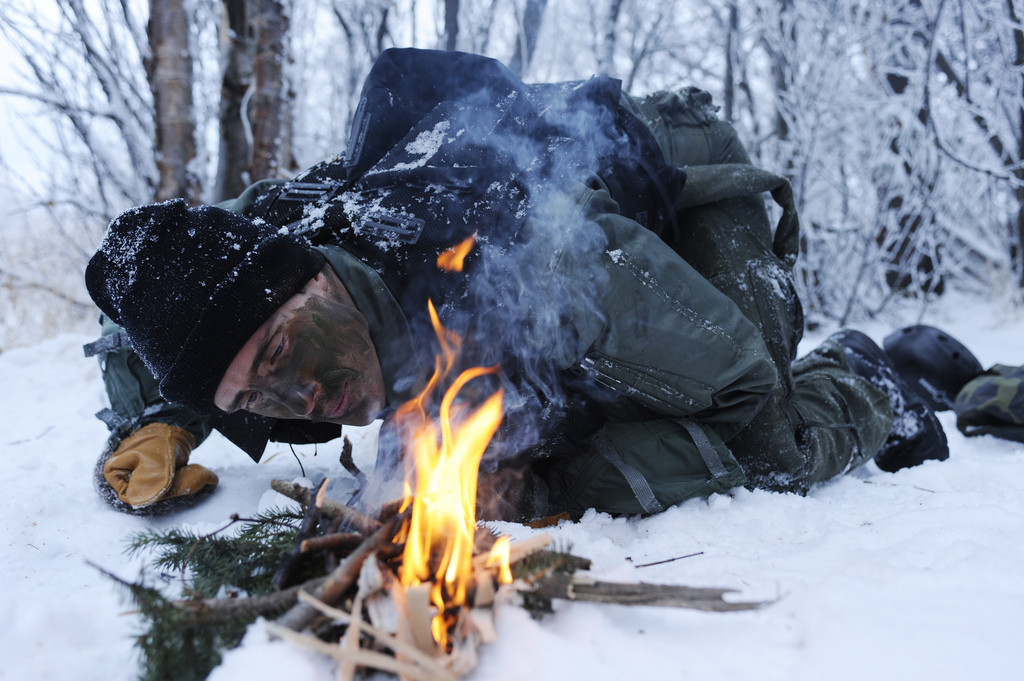It would be easy to prep a bug-out bag if you could bring one of everything. The problem arises when you realize how hard it is to lug a generator through dense underbrush — portability is key.
However, the need for portability can’t cause you to forgo the tools you’ll need for survival. For example, a backpack full of Hello Kitty dolls is incredibly lightweight, but really only good for burning in a fire that you’ll now struggle to make because … you brought nothing but Hello Kitty dolls.
With these seven tools, you can pack a basic bug-out bag and be prepped for survival. Incidentally, we’re making the assumption that you have the appropriate survival skills to use these tools effectively. If not, check out a really helpful site called Summit Zero for tips.
Knife
A good survival knife is the ultimate tool. You can do just about anything – prepare wood for a shelter or fire, skin a deer, and give yourself a jagged-yet-stylish “survival chic” haircut. Most survivalists recommend a fixed blade knife – without a hinge to fail, your knife will be stronger and last longer.
Knives are also great for holding between your teeth as you swing down on a vine like a total survival badass. You’ll never actually need to do this, of course, but it could help lift your spirits when you’re feeling low out there.
Cordage
Cordage remains one of the best items to bring with you. If you haven’t brought any, you can make your own cordage. But, it’s incredibly time-consuming and doesn’t work nearly as well as some nylon paracord. Getting a shelter up for your first night is a pretty key survival task, especially if the weather is cold or inclement.
In addition to your shelter, you can use cordage for snares, traps, nets, baskets, hanging food, making tools … the list is endless.
Shelter Material
Yep, shelter is super important. Not just because of your human nesting instinct – because it can take only three hours without shelter to die from exposure in harsh conditions.
Shelter material can be as simple as a tarp or a large trash bag – something that can be tied up quickly and keep the rain off your head. Your mother was right when she praised the virtues of a good night’s sleep. Also, if it’s chilly outside, it’s probably a good idea to wear the nice sweater she knitted you for Christmas. And give her a call every once in a while.
Any material you bring for your shelter can be useful in many ways. Depending on what you pack, you’ll be able to improvise sun protection, a backpack, and more.
Navigation Tools
It’s no use hiking deep into the wild if you don’t know how to hike your way back out. Bring a compass and a map – and perhaps more importantly, learn how to use them before you go.
Not only can your navigational tools get you back home, they’ll help you navigate and learn your patch of the wild. You can mark good foraging or hunting spots, for example. Or a great place to host a tea with all your made-up woodland friends. Hey, we have no idea how long you’ve been out there … we’re not judging.

Firestarting © UNC – CFC – USFK
Firestarters
Making fire is the ultimate survival skill, and bringing the tools to make one quickly will be a big help.
Great options abound here – practice fire-making at home and learn what works for you. For some people, waterproof matches and tinder are ideal for their 72-hour plan. For others, a magnesium fire starter or ferro rod is the tool of choice.
Again, make sure you know how to use it. Trying to start a fire in the rainy woods with shaking hands is a great way to feel like an idiot who should have prepared, but not a great use of your survival skills.
Water Container
Let’s assume you find a beautiful, babbling brook on your first day (yes, we’re aware that that’s a big assumption). You’ll still need to collect and purify the water before you can start slurping it down.
Bring a container so you can carry your water back to camp. Make sure you can boil it – last we checked, a Nalgene melts pretty fast over hot coals.
Assuming that the babbling brook hasn’t shown up yet, your container will be useful for collecting rainwater or harvesting from a survival still.
First Aid Kit
While we would hope you’d always do your best to be safe, accidents happen. People chop their legs with axes, get maimed by things they were hoping to eat, and burn themselves in their cooking fires.
If any of these — or countless more potential injuries — happen, you’ll need to patch yourself up with a proper first aid kit to have any hope of survival.
We don’t recommend anything too involved and heavy – but a small, smartly stocked kit with sterile bandages, anti-bacterial ointment, and even pain relief or tweezers can go a long way.
A Note to Our Readers
You may, after reading this article, have questions along the lines of – What about duct tape? What about emergency food or a change of clothes? To that, we can only say: screw you. This is our list. You can go make your own – or complain wildly in the comments. It’s a free country.